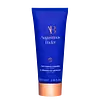What's inside
What's inside
 Key Ingredients
Key Ingredients

 Benefits
Benefits

 Concerns
Concerns

 Ingredients Side-by-side
Ingredients Side-by-side

Water
Skin ConditioningCoco-Betaine
CleansingSodium Cocoyl Isethionate
CleansingLauramidopropyl Betaine
CleansingPropanediol
SolventPhenethyl Alcohol
MaskingPolysorbate 20
EmulsifyingCaprylyl Glycol
EmollientLactic Acid
BufferingCaprylic/Capric Triglyceride
MaskingArginine/Lysine Polypeptide
Skin ConditioningLeuconostoc/Radish Root Ferment Filtrate
AntimicrobialCucumis Sativus Fruit Extract
EmollientEthylhexylglycerin
Skin ConditioningMenthyl Ethylamido Oxalate
Skin ConditioningCitrus Aurantium Dulcis Peel Extract
Emulsion StabilisingCitrus Limon Peel Extract
EmollientLimonene
PerfumingAllantoin
Skin ConditioningCalendula Officinalis Flower Extract
MaskingCamellia Oleifera Leaf Extract
AstringentChamomilla Recutita Flower Extract
MaskingGeranium Maculatum Extract
TonicHamamelis Virginiana Leaf Extract
Skin ConditioningMagnesium Ascorbyl Phosphate
AntioxidantPseudoalteromonas Exopolysaccharides
Skin ConditioningPyrus Malus Fruit Extract
Skin ConditioningSodium Cocoyl Hydrolyzed Amaranth Protein
Skin ConditioningCitric Acid
BufferingSebacic Acid
BufferingSodium Salicylate
PreservativeSorbic Acid
PreservativeWater, Coco-Betaine, Sodium Cocoyl Isethionate, Lauramidopropyl Betaine, Propanediol, Phenethyl Alcohol, Polysorbate 20, Caprylyl Glycol, Lactic Acid, Caprylic/Capric Triglyceride, Arginine/Lysine Polypeptide, Leuconostoc/Radish Root Ferment Filtrate, Cucumis Sativus Fruit Extract, Ethylhexylglycerin, Menthyl Ethylamido Oxalate, Citrus Aurantium Dulcis Peel Extract, Citrus Limon Peel Extract, Limonene, Allantoin, Calendula Officinalis Flower Extract, Camellia Oleifera Leaf Extract, Chamomilla Recutita Flower Extract, Geranium Maculatum Extract, Hamamelis Virginiana Leaf Extract, Magnesium Ascorbyl Phosphate, Pseudoalteromonas Exopolysaccharides, Pyrus Malus Fruit Extract, Sodium Cocoyl Hydrolyzed Amaranth Protein, Citric Acid, Sebacic Acid, Sodium Salicylate, Sorbic Acid
Water
Skin ConditioningGlycerin
HumectantSodium Cocoyl Isethionate
CleansingBehenyl Alcohol
EmollientSodium Cocoyl Glycinate
CleansingGlycol Distearate
EmollientSodium Lauryl Sulfoacetate
CleansingArachidyl Alcohol
EmollientCetearyl Alcohol
EmollientLeuconostoc/Radish Root Ferment Filtrate
AntimicrobialCitric Acid
BufferingArachidyl Glucoside
EmulsifyingHydroxyacetophenone
AntioxidantLactobacillus
Skin ConditioningNiacinamide
SmoothingXanthan Gum
EmulsifyingSodium Citrate
BufferingCocos Nucifera Fruit Extract
EmollientGalactoarabinan
Quillaja Saponaria Wood Extract
Skin ConditioningPropanediol
SolventLansium Domesticum Leaf Extract
Skin ConditioningMaltodextrin
AbsorbentCaprylic/Capric Triglyceride
MaskingHydrolyzed Rice Protein
Skin ConditioningTocopheryl Acetate
AntioxidantMoringa Oleifera Seed Oil
EmollientAlanyl Glutamine
HumectantArginine
MaskingCeramide NP
Skin ConditioningCeramide AP
Skin ConditioningGlycine
BufferingLysine
Skin ConditioningPentylene Glycol
Skin ConditioningPhytosterols
Skin ConditioningProline
Skin ConditioningSodium Cetearyl Sulfate
CleansingOrobanche Rapum Extract
Skin ProtectingSodium Hydroxide
BufferingAscorbic Acid
AntioxidantBehenic Acid
CleansingBrassica Alba Seed Extract
Skin ConditioningHydrogenated Lecithin
EmulsifyingLeontopodium Alpinum Flower/Leaf Extract
Skin ConditioningOleic Acid
EmollientOligopeptide-177
Oligopeptide-6
Skin ConditioningPalmitic Acid
EmollientPhenylalanine
MaskingPotassium Sorbate
PreservativeSodium Chloride
MaskingStearic Acid
CleansingSunflower Seed Acid
CleansingWater, Glycerin, Sodium Cocoyl Isethionate, Behenyl Alcohol, Sodium Cocoyl Glycinate, Glycol Distearate, Sodium Lauryl Sulfoacetate, Arachidyl Alcohol, Cetearyl Alcohol, Leuconostoc/Radish Root Ferment Filtrate, Citric Acid, Arachidyl Glucoside, Hydroxyacetophenone, Lactobacillus, Niacinamide, Xanthan Gum, Sodium Citrate, Cocos Nucifera Fruit Extract, Galactoarabinan, Quillaja Saponaria Wood Extract, Propanediol, Lansium Domesticum Leaf Extract, Maltodextrin, Caprylic/Capric Triglyceride, Hydrolyzed Rice Protein, Tocopheryl Acetate, Moringa Oleifera Seed Oil, Alanyl Glutamine, Arginine, Ceramide NP, Ceramide AP, Glycine, Lysine, Pentylene Glycol, Phytosterols, Proline, Sodium Cetearyl Sulfate, Orobanche Rapum Extract, Sodium Hydroxide, Ascorbic Acid, Behenic Acid, Brassica Alba Seed Extract, Hydrogenated Lecithin, Leontopodium Alpinum Flower/Leaf Extract, Oleic Acid, Oligopeptide-177, Oligopeptide-6, Palmitic Acid, Phenylalanine, Potassium Sorbate, Sodium Chloride, Stearic Acid, Sunflower Seed Acid
Alternatives
Ingredients Explained
These ingredients are found in both products.
Ingredients higher up in an ingredient list are typically present in a larger amount.
This ingredient is an emollient, solvent, and texture enhancer. It is considered a skin-softener by helping the skin prevent moisture loss.
It helps thicken a product's formula and makes it easier to spread by dissolving clumping compounds.
Caprylic Triglyceride is made by combining glycerin with coconut oil, forming a clear liquid.
While there is an assumption Caprylic Triglyceride can clog pores due to it being derived from coconut oil, there is no research supporting this.
Learn more about Caprylic/Capric TriglycerideCitric Acid is an alpha hydroxy acid (AHA) naturally found in citrus fruits like oranges, lemons, and limes.
Like other AHAs, citric acid can exfoliate skin by breaking down the bonds that hold dead skin cells together. This helps reveal smoother and brighter skin underneath.
However, this exfoliating effect only happens at high concentrations (20%) which can be hard to find in cosmetic products.
Due to this, citric acid is usually included in small amounts as a pH adjuster. This helps keep products slightly more acidic and compatible with skin's natural pH.
In skincare formulas, citric acid can:
While it can provide some skin benefits, research shows lactic acid and glycolic acid are generally more effective and less irritating exfoliants.
Most citric acid used in skincare today is made by fermenting sugars (usually from molasses). This synthetic version is identical to the natural citrus form but easier to stabilize and use in formulations.
Read more about some other popular AHA's here:
Learn more about Citric AcidLeuconostoc/Radish Root Ferment Filtrate is a natural preservative. It comes from fermenting radish roots with a bacteria called leuconostoc.
Leuconostoc comes from lactic acid.
This ingredient has antimicrobial properties and helps prevent the growth of bacteria in a product.
Leuconostoc is used to make the traditional Korean side-dish, kimchi. It is also used to make sourdough bread (both incredibly yummy foods).
Learn more about Leuconostoc/Radish Root Ferment FiltratePropanediol is an all-star ingredient. It softens, hydrates, and smooths the skin.
It’s often used to:
Propanediol is not likely to cause sensitivity and considered safe to use. It is derived from corn or petroleum with a clear color and no scent.
Learn more about PropanediolSodium cocoyl isethionate is a natural ingredient from coconut oil. It is an ultra gentle cleanser that gives a nice foam without drying the skin or impacting the skin barrier.
The amount of foam created depends on the amount of sodium cocoyl isethionate used in the product.
This ingredient also helps improve the spreadability of a product.
Learn more about Sodium Cocoyl IsethionateWater. It's the most common cosmetic ingredient of all. You'll usually see it at the top of ingredient lists, meaning that it makes up the largest part of the product.
So why is it so popular? Water most often acts as a solvent - this means that it helps dissolve other ingredients into the formulation.
You'll also recognize water as that liquid we all need to stay alive. If you see this, drink a glass of water. Stay hydrated!
Learn more about Water